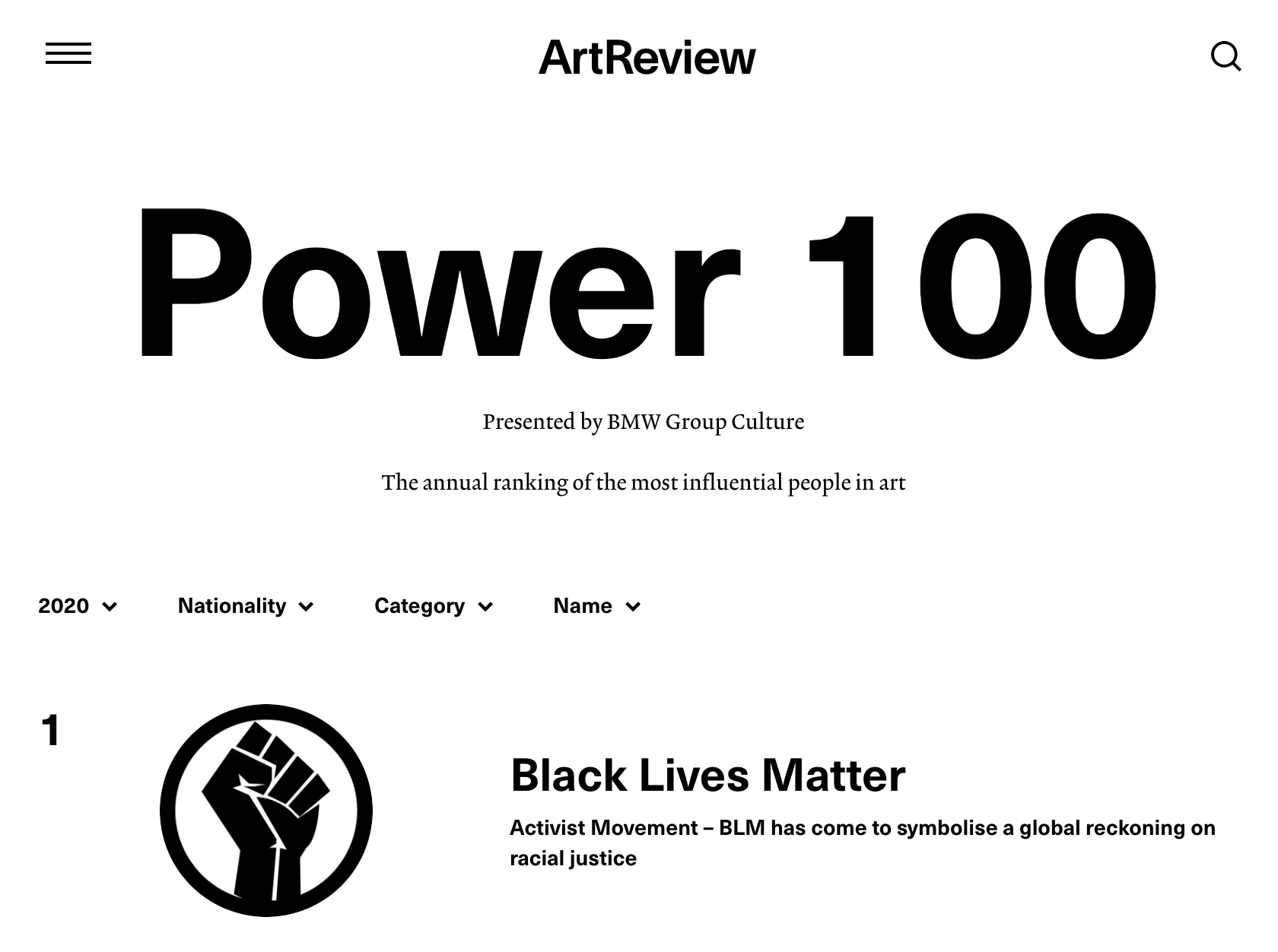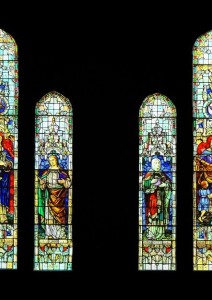Brave New (Art) World: How 2020 is reshaping the art market and the art world
2020 will go down as the most tumultuous year in the art world since the end of World War II. Two powerful external forces swept through it, radically changing the landscape as they did: Covid and social justice movements led by Black Lives Matter (BLM) and a reenergised #MeToo.
Our overview below takes stock of the complex pattern of change across the art market and art world and, in the following section, we consider the major trends that are emerging, reshaping our art and culture as they do.
Overview
‘Pretty good, considering’ is the headline, end-of-year report for the performance of the top end of the art market in 2020. Whilst some estimates place the overall contraction of the art market this year at between 30% - 40%, blue-chip art asset values and the big players have proved relatively resilient.
Historically speaking the resilience of blue-chip art asset values is unsurprising. The underlying levels of wealth of major collectors, means the art market has an unusual ability to efficiently self-regulate supply and demand. The top end of the art market weathered the 2007-2008 global financial crisis and its fall out remarkably well and the indications are that same will be true for the art market in the age of Covid.
The survival, to date, of the auction houses and the mega-galleries, has been primarily due to impressively rapid innovation on their part, namely the almost overnight digitisation of their businesses. It is a development that will have major long-term consequences for art and its market (See below, Major Trends, Convergence). The charge online was led by Sotheby’s and Christie’s who quickly revamped their marquee auctions as hybrid digital/physical, live-streamed events, a format quickly branded as “QVC for oligarchs” by one wit. Shunted into what would normally be the summertime dead zone, the auctions performed well enough to inject confidence into a confused and worried market. Major works by Francis Bacon, Roy Lichtenstein, Barnett Newman, Brice Marden and Picasso, amongst others, all sold well. Sales in recent months by Sotheby’s Hong Kong and Phillips in New York have sustained reasonable confidence levels and suggest that a vaccinated future will see a fairly swift return to a strong and active art market.
Still from Gagosian Premieres Trailer.
Artwork © Mary Weatherford. Video: Little Dot Studios. Courtesy Gagosian
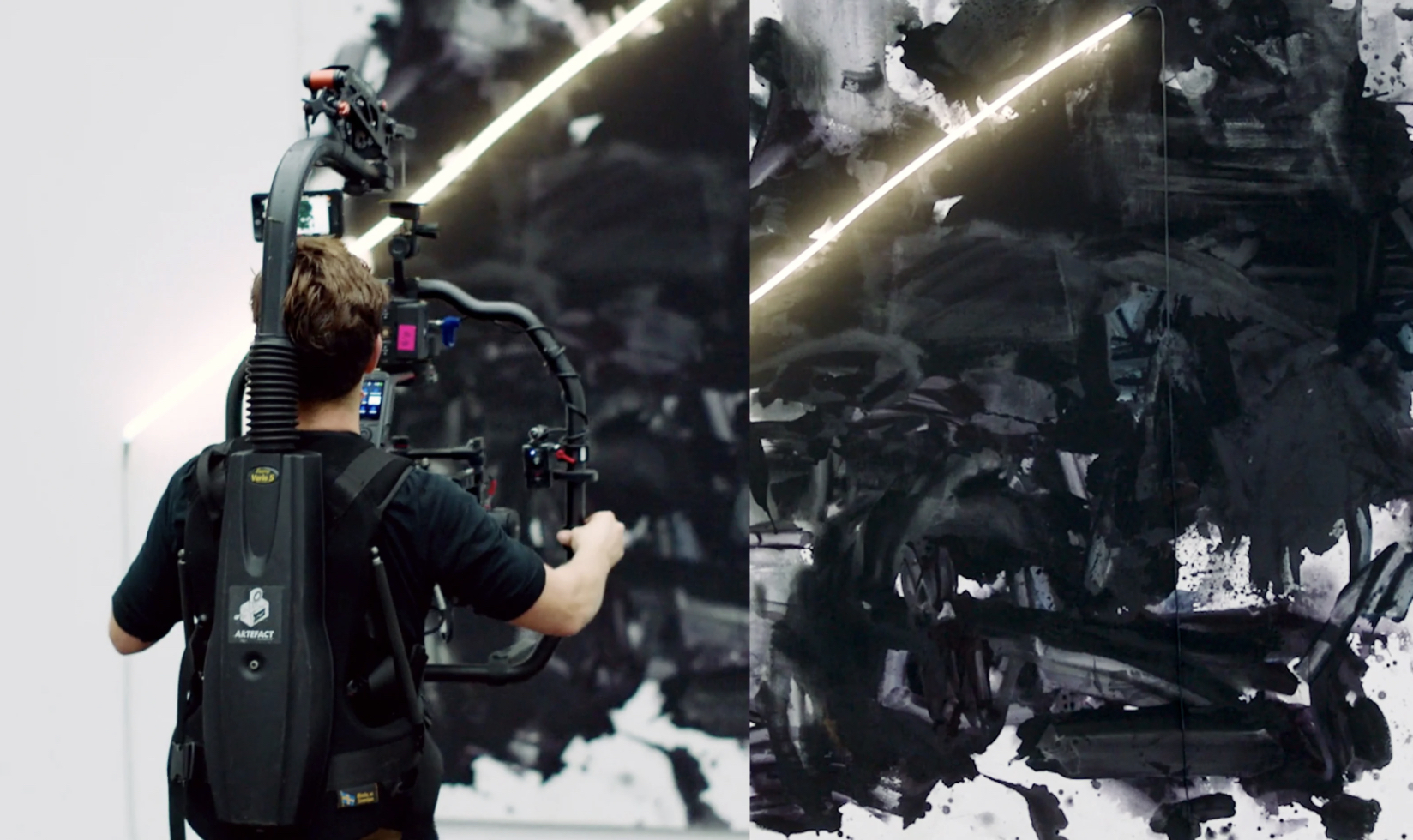
Superficially the onward march of the mega galleries continued apace. Leaning into the crisis they adapted and even expanded in areas, working overtime to maintain the art business’ valiant record of projecting confidence at all times. In the early summer the major New York galleries followed the money and opened up, literally, shops in the Hamptons. Gagosian completed a new space in Athens and galleries across the world spruced-up their websites and started churning out content. OVR’s (Online Viewing Rooms) and VR and AR (Augmented Reality) platforms popped up on screens everywhere after which it only took a few months for the phrase ‘OVR fatigue’ to pop up in the art press.
One of the significant by-products of all this online selling, was the move of many galleries to price transparency. For seasoned art collectors and professionals, it was strangely shocking to see blue-chip galleries publicly publishing prices. The development should be good news for buyers but not necessarily for all artists and gallerists as questions like “is anyone really going buy that for that?” immediately surfaced. There was also some sadness in seeing another yet another shred of the artworld’s traditional mystique being stripped away.
Rembrandt Van Rijn, Self-portrait wearing a ruff and black hat, 1632, Sold for £14.5 million (Sotheby’s London, July 2020)
Credit: Sotheby’s
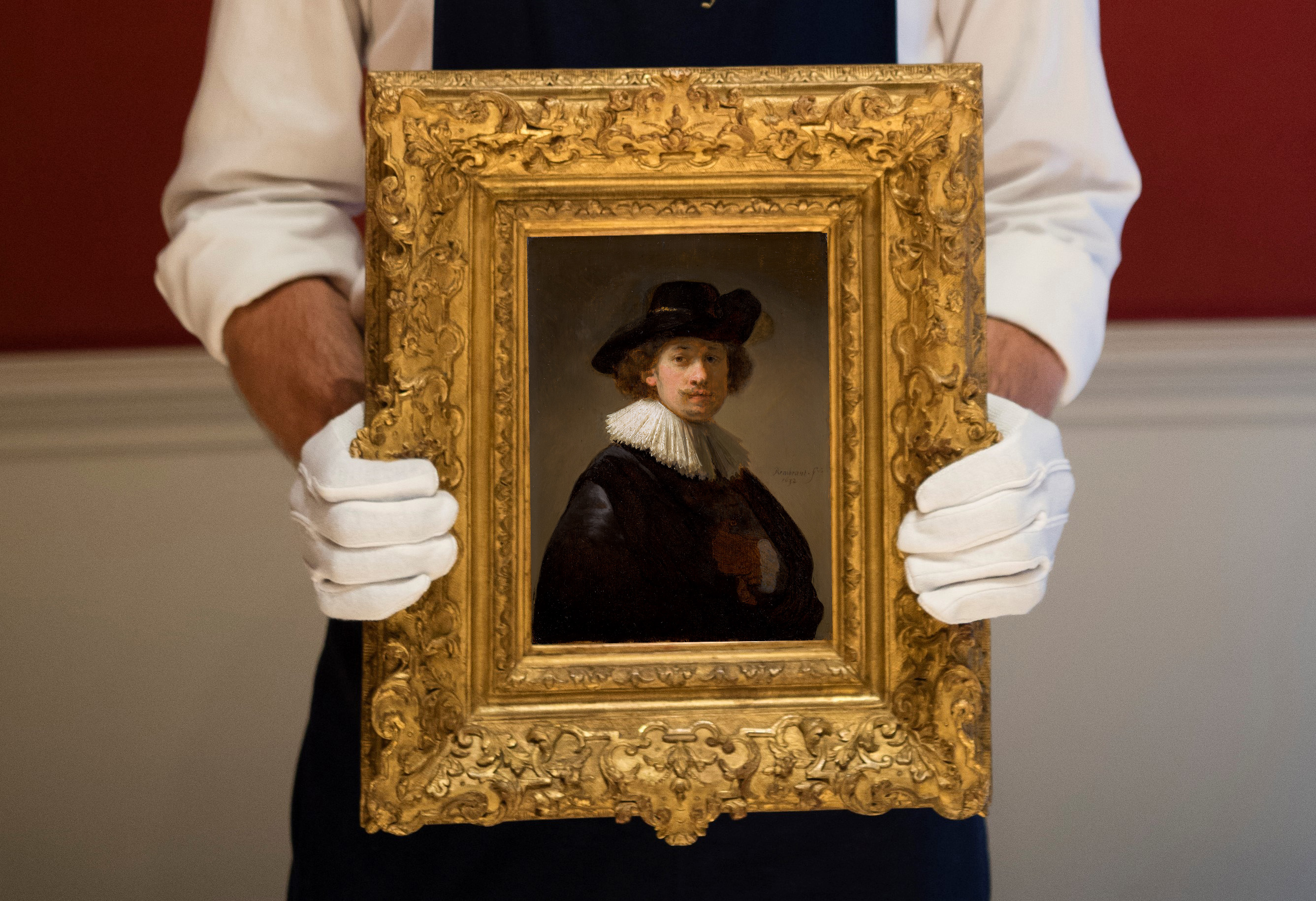
Another likely consequence of the digitisation of the art market will be to entrench the dominance of the mega-galleries and further disadvantage medium to small sized galleries who lack the capital to develop marketing reach and slick online ecommerce facilities. A sign of the times was cult NY gallerist Gavin Brown’s decision to shutter his hyper-fashionable gallery and join forces with the blue-chip Gladstone Gallery. As his gallery had exemplified the possible journey from punk-upstart gallery to serious artworld player, the implication of Brown’s move is ominous for other ambitious galleries.
Many galleries, of course, will go to the wall. Indeed, the impact of the pandemic on the rank-and-file of the art market, i.e. most; artists, art-professionals, galleries, art fairs, publishers, etc, has ranged from the challenging to the catastrophic.
In the non-commercial art world; museums, art schools, NGO’s etc, the pandemic’s devastation has been even worse. Museums, globally, robbed of audiences and revenues, have been forced to make mass redundancies and scale back all their future plans. Jean-Lux Martinez, Director of the Musée du Louvre, the world’s most visited museum declared the pandemic the worst crisis it had faced, post-war. He predicted that even in a largely vaccinated world, it will take many years for visitor numbers to recover. Many US museums, lacking the state support their European counterparts receive, controversially started de-accessioning and selling major works from their collections to shore up their finances. It is hoped this will be a short-lived trend. Working with much reduced budgets, museums will be forced to retreat from the expensive global blockbuster shows that had come to dominate their programming in recent years and focus on refreshing presentations of their permanent collections.
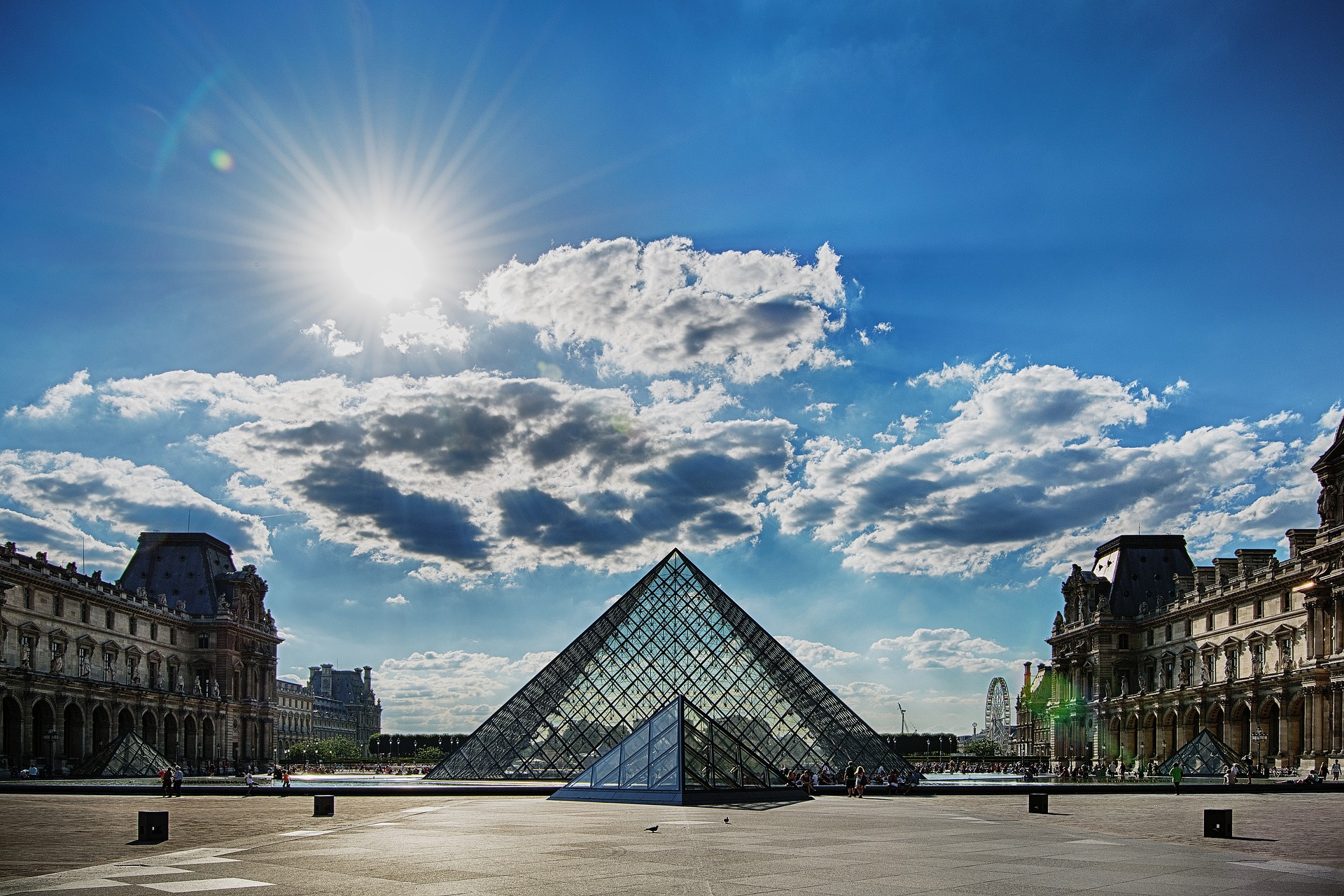
In the midst of all this gloom, it is important to celebrate the great deal of hope and positivity flowing from countless charitable and philanthropic initiatives that have sprung up across the artworld to support struggling art institutions, artists, art professionals and health workers through the crisis. Most notable has been the extraordinary success of #artistssupportpledge an Instagram-based, mutually supportive marketplace for low-priced works (See https://artistsupportpledge.com). All of which has been a reminder that whilst the art world is becomingly increasingly business-like and conventional in some respects, it is still a community in which there is enough compassion to go around. In this we have been pleased to have our part through Modern Forms’ philanthropic program (See Modern Forms 2020 report).
Other glimmers of hope for artists everywhere are in early indications that the emergent, digital, retail space for art will significantly expand the market for lower-priced artworks (See interview with Alex Branczik), though inevitably the lion’s share will be taken by ‘brand’ artists. Another positive for both the planet and the mental wellbeing of many art professionals, the sudden cessation of what was an increasingly frenetic, global, merry-go-round of openings, art fairs and biennales, has provoked a good of revisionist soul-searching. For the moment at least, many are pledging to ‘build back better’, i.e. to slow down and consume less airmiles shifting themselves, staff and crated art works around the world, and instead, think and act locally. The aforementioned annihilation of the art fair industry should help the artworld indulge its new-found passion for sustainability.
Major trends
Convergence
Unable to meet and sell to their clients IRL, the auction houses and mega galleries, previously somewhat dismissive of the digital realm have spent most of this year scrambling to take their businesses online at breakneck speed. They've all become major content producers overnight, a trend exemplified by Gagosian Premiers, the gallery's "new livestreaming series gives audiences a backstage pass to celebrate new exhibitions, even while physically distanced.” As Sotheby’s CEO Charles Stewart put it “We’ve seen a five-year acceleration of digital behaviour in the last six months".
Currently locked in survival mode, the main question the art world is asking of its sudden, en masse, move online is: 'Are we still selling?’ However, even if vaccines allow a return to physical business almost-as-usual, the digitisation of the art world is now a fact. As Stewart continued in his observation "and as we all know with technology innovation, once it’s happened, you don’t go back.” This development will have profound consequences, the most significant of which, arguably, will be an accelerated convergence of art world with high-end, luxury-entertainment culture.
Warhol and a Hermès bag juxtaposed in The Art of Hermès, Omer Trioche Gallery, December 2020
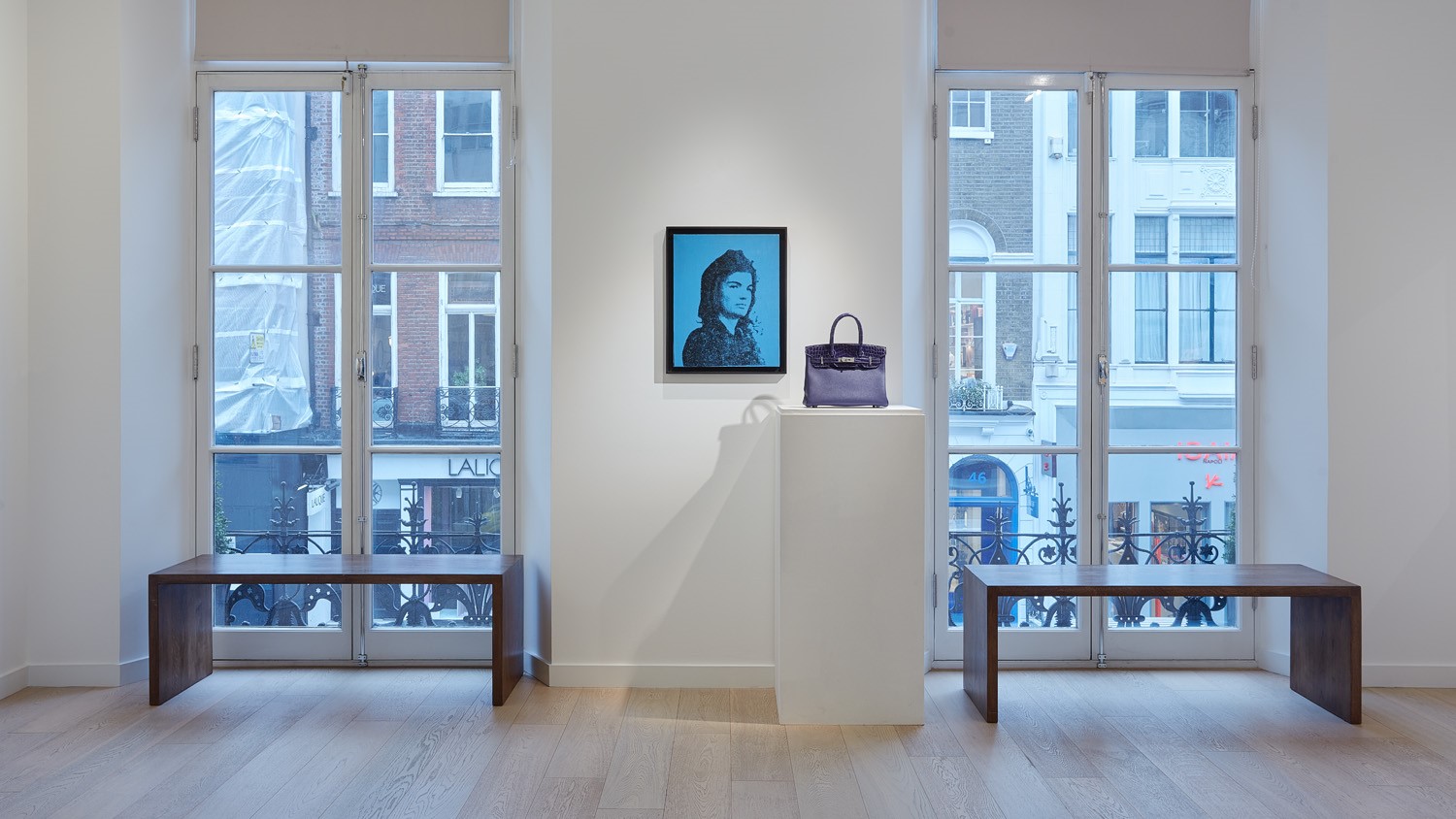
Galleries, finding themselves competing in the same digital marketing space as luxury brands, are becoming more like them, investing in glossy, narrative-driven marketing and chasing likes on social media. Auction houses, used to catering for tiny, very select audiences suddenly find themselves to be mass market brands - 280,000 people reportedly watched Christie’s New York’s 20th-century evening art auction in October. As Giovanna Bertazzoni, Christie’s deputy chairman of the 20th and 21st century department, observed: “We now have an enormous platform of people watching us.” Possibly in wry deference to the weirdness of the present historical moment, the star lot of the sale was ‘Stan’, an almost complete T-Rex skeleton, who missed out on the highs and lows of the 20th century by only 65 million years. As he sold for a chunky $31.8m, this permissive approach to historical categories went largely unremarked upon.
All of this will affect what sells and subsequently what the galleries and auction houses think is worth trying to sell and so on (see interview with Alex Branczik). It seems inevitable that distinctions between High and Low in the art world will evaporate still further. Expect to see a lot more Kaws and Banksy-style street-cum-contemporary artists coming down the pike and a steady stream of fashion / music / celebrity cross-over offerings popping up in high-end galleries near you.
Stan, the T-Rex, sold for $31.8m at Christie’s in October. Image Christie’s Image Ltd. 2020
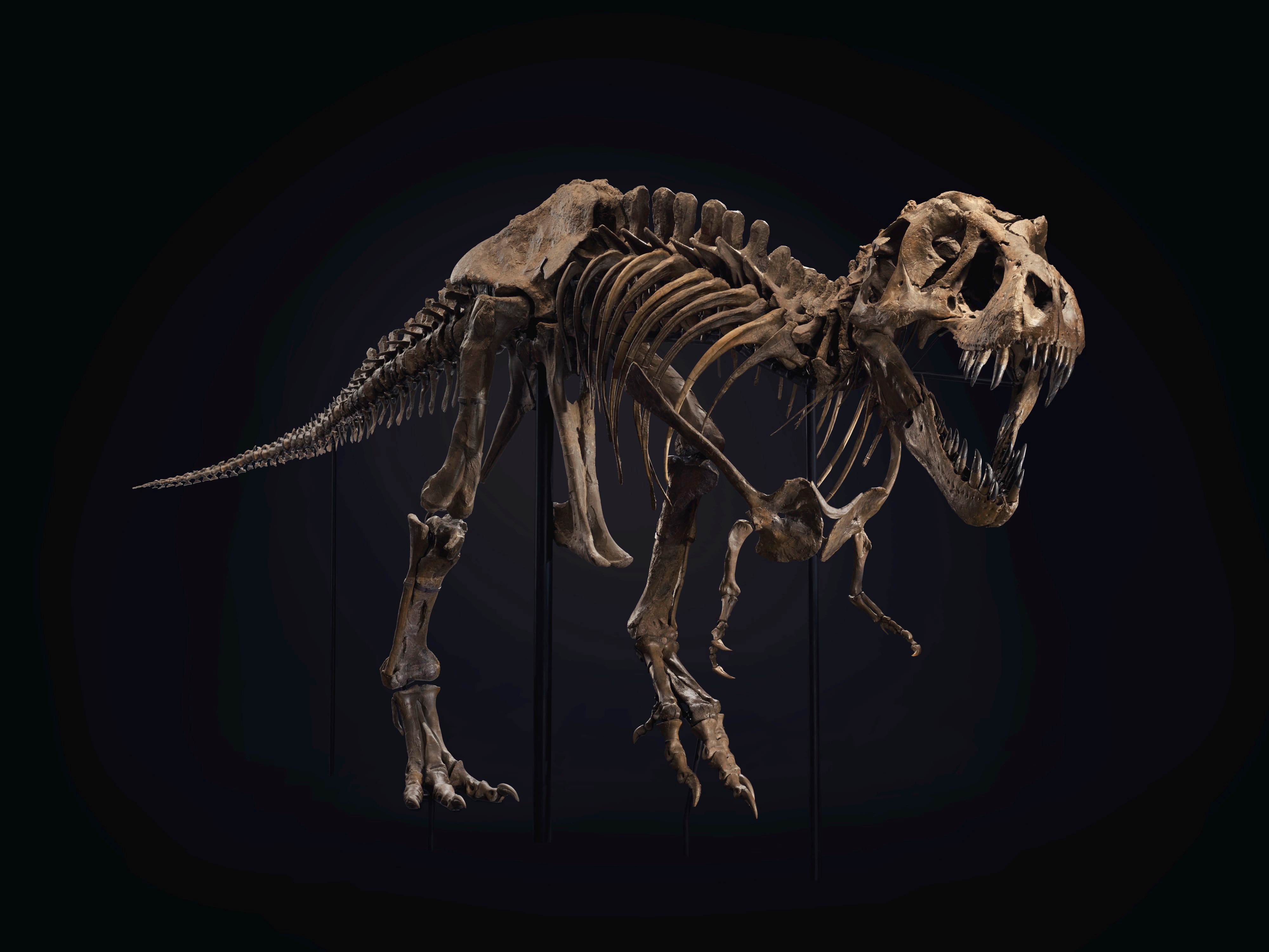
The rise and rise of Contemporary Art
It is perhaps unimaginable now, but until the end of the 1990’s Contemporary Art was a marginal segment of the overall market. Contemporary Art now accounts for 15% of global Fine Art auction turnover, and is its primary growth driver, having increased an astonishing +2,100% over 20 years.
This trend will intensify, with Contemporary continuing to take market share from other sectors of the art market and the relationship between historical significance and financial value will become increasingly confused. Consider that at auction, in July, Self portrait wearing a ruff and black hat (1632) by Rembrandt considered one of the finest portraitists in history, sold for £14.5m, in October Banksy’s Show me the Monet (2005) sold for £7.5m.
As British author Iain Sinclair observes we now live in the "instant, dominant, present tense of the electronic digital world”. This fact profoundly effects the culture we value.
Artprice.com - Report on the unstoppable rise of the Contemporary Art sector
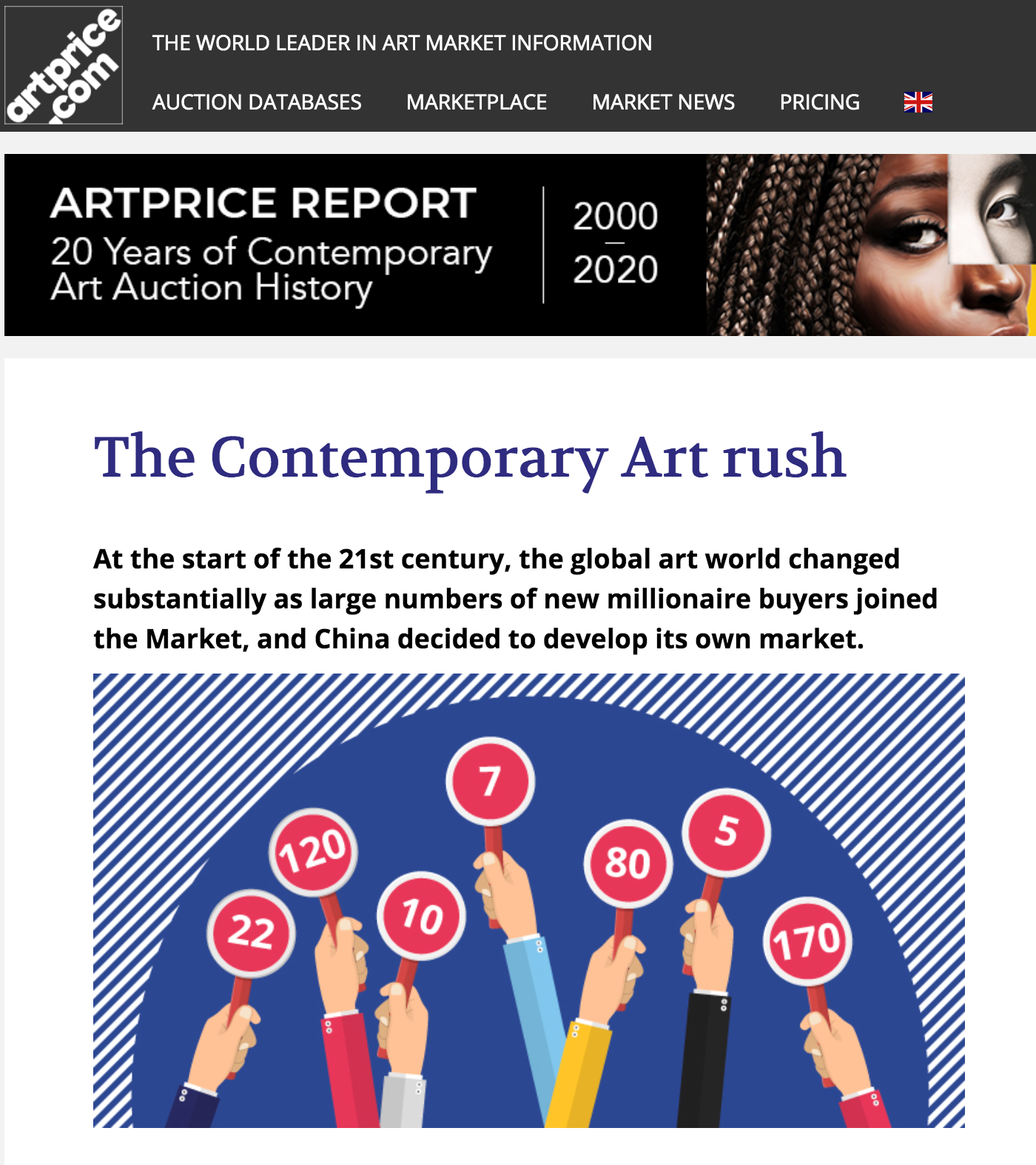
The future looks like… Japan and Robinhood Inc.
For a guide to the future of Western visual culture look at Japan, where there is little or no distinction between ‘High’ and ‘Low’ culture. Instead everything, including the shiny productions of a tech-driven, consumer culture, are part of a fascinating, bewildering whole.
Meanwhile in the art market, a major expansion, ‘democratisation’ and financialization of the market of large volumes of editioned work seems likely. Expect to see a micro art world version of the story played out over the last decade in equity markets by the rise of Robinhood Inc and other discount online brokerages. Reportedly there are several businesses developing ‘trading’ platforms for prints and editioned works.
BLM / #MeToo / Cancel Culture
2020 will go down as the year that social justice movements, after decades of being name-checked, lauded and even exhibited, started to reshape the deep structures of the art world.
In last days of May, the Black Lives Matter movement, embodying global outrage at the death of George Floyd while being arrested by police in Minneapolis, arose and swept through much of the West. The art world was quick to respond. An avalanche of statements of solidarity with BLM and commitment to racial equality poured out from galleries and museums across the world. However well-intentioned, these responses also reflected a widespread nervousness of, as The Art Newspaper put it “the lack of racial equity in a very white market”. As the New York Times noted not a single one of the 281 galleries participating in Art Basel’s online edition in June was owned by an African American. Brooklyn gallerist KJ Freeman was widely quoted for critiquing the artworld’s vows of commitment to tackling structural racism as “performative wokeness. It comes from a similar place as wanting to get into the Prada party at an art fair: the desire for access.”
Nonetheless, rapid movements in the both curatorial and hiring policies of major galleries and museums across the Anglophone world suggest that, for the moment at least, significant elements of the artworld are serious in pursuing structural change. Indicative of that, this December, Art Review placed BLM at the top of its Power 100 list of the most powerful people or entities in the art world.
The power of the BLM movement spilled over and re-energised the #MeToo movement and Cancel Culture within the artworld. Numerous Instagram accounts and websites platforming anonymous accounts of sexual harassment and other discriminatory behaviour sprung up – a career-ending development for several art world professionals across the world. The most high-profile of which was Gagosian director Sam Orlofksy, “let go in November following allegations of “unacceptable and repugnant” misconduct against women” as reported by The Art Newspaper.
Whatever configuration the art-world takes, post-pandemic, in terms of gender, race and identity rights and politics, its won’t be business as usual. So at least some of the change wrought by 2020 is to be welcomed.
BLM tops ArtReview’s Power 100 list for 2020
